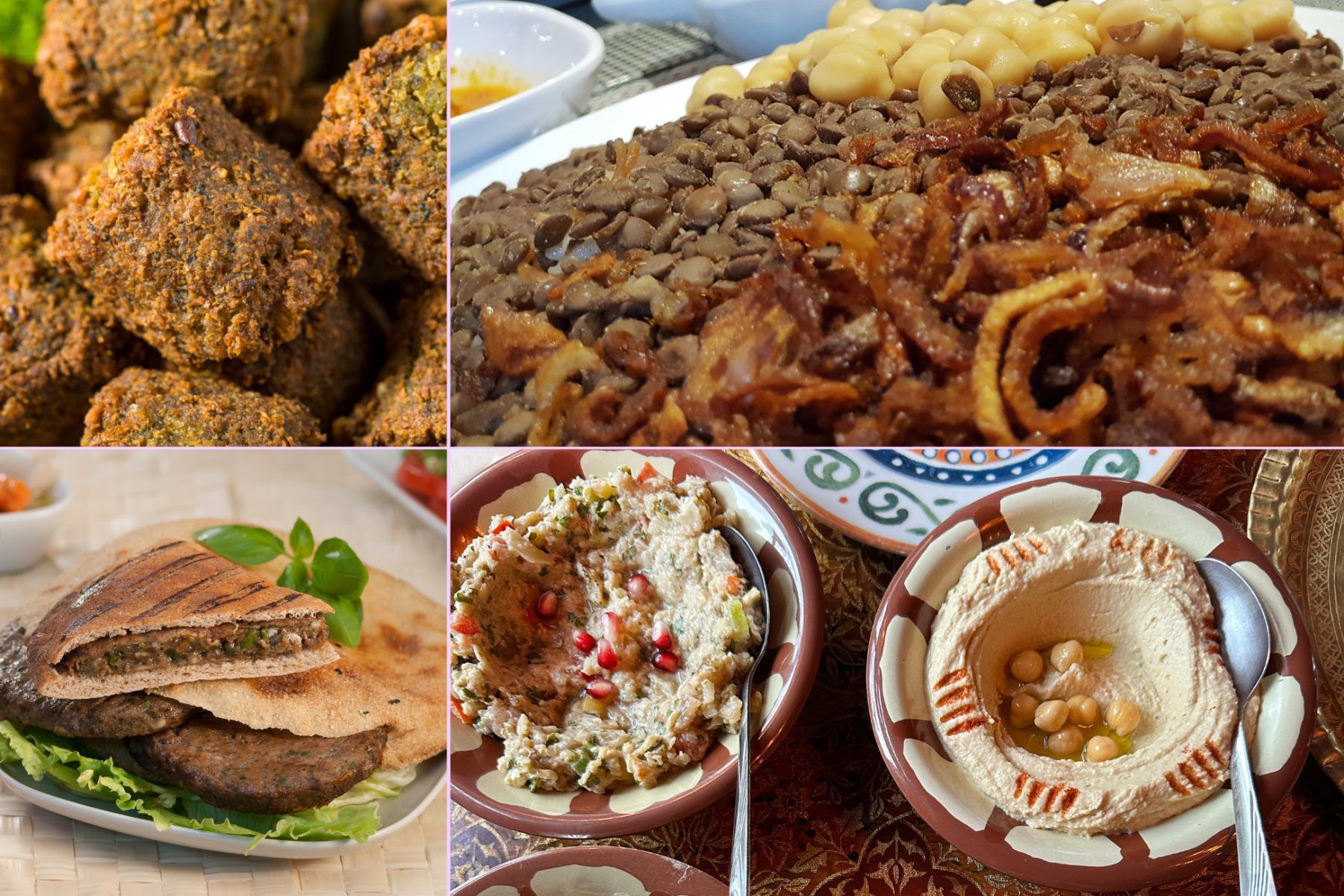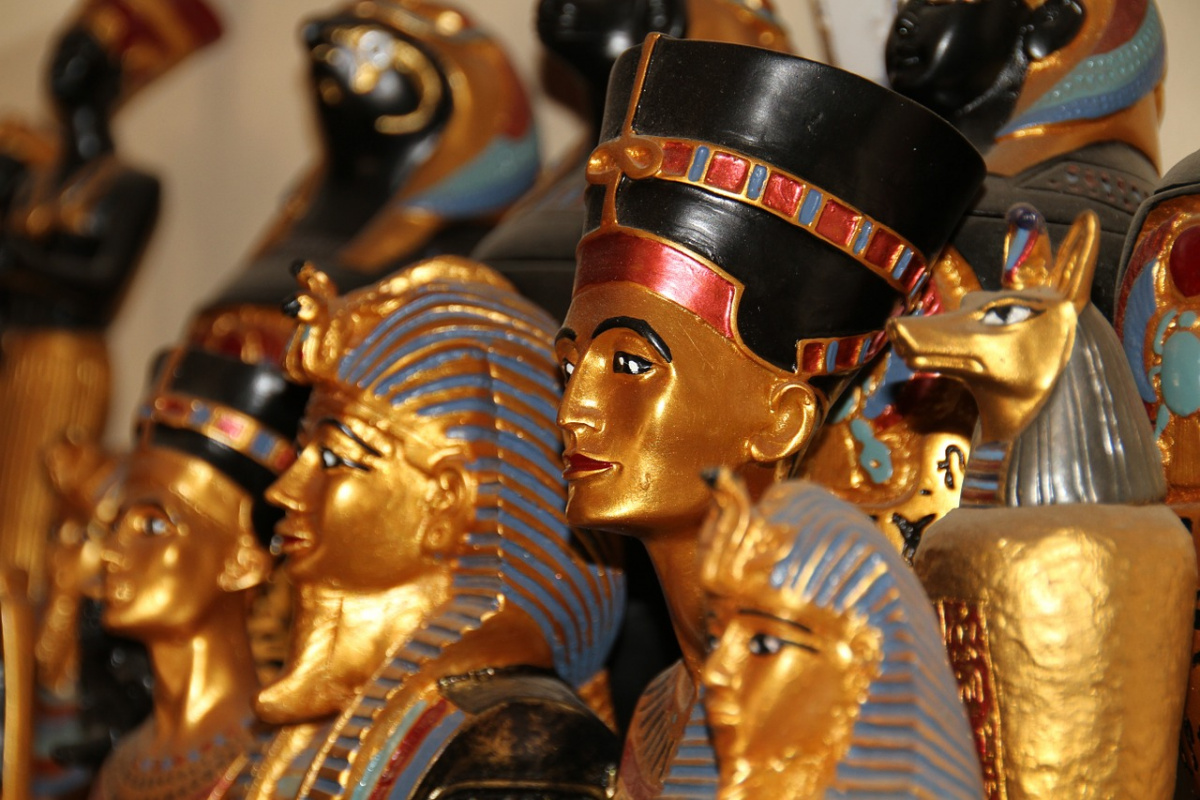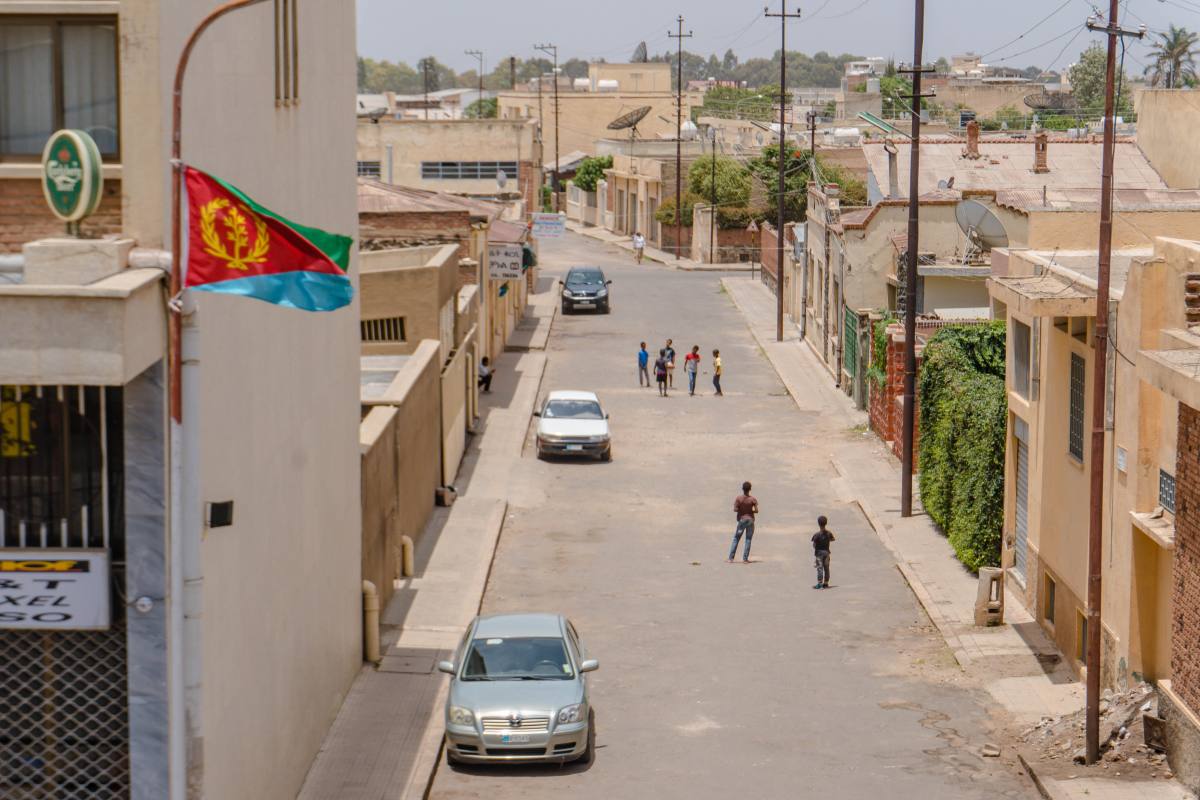Egyptian Food to Try on Your Trip to Egypt
When planning a trip to Egypt the first thing that comes to mind is seeing the pyramids of Giza, or cruising the Nile. But Egypt is much more than ancient wonders and historic sites. It’s also a land of delicious food with a mix of Middle Eastern and North African influences. To get a grasp of the diverse culinary scene in Egypt, here’s a list of the traditional Egyptian foods you must eat when you visit.
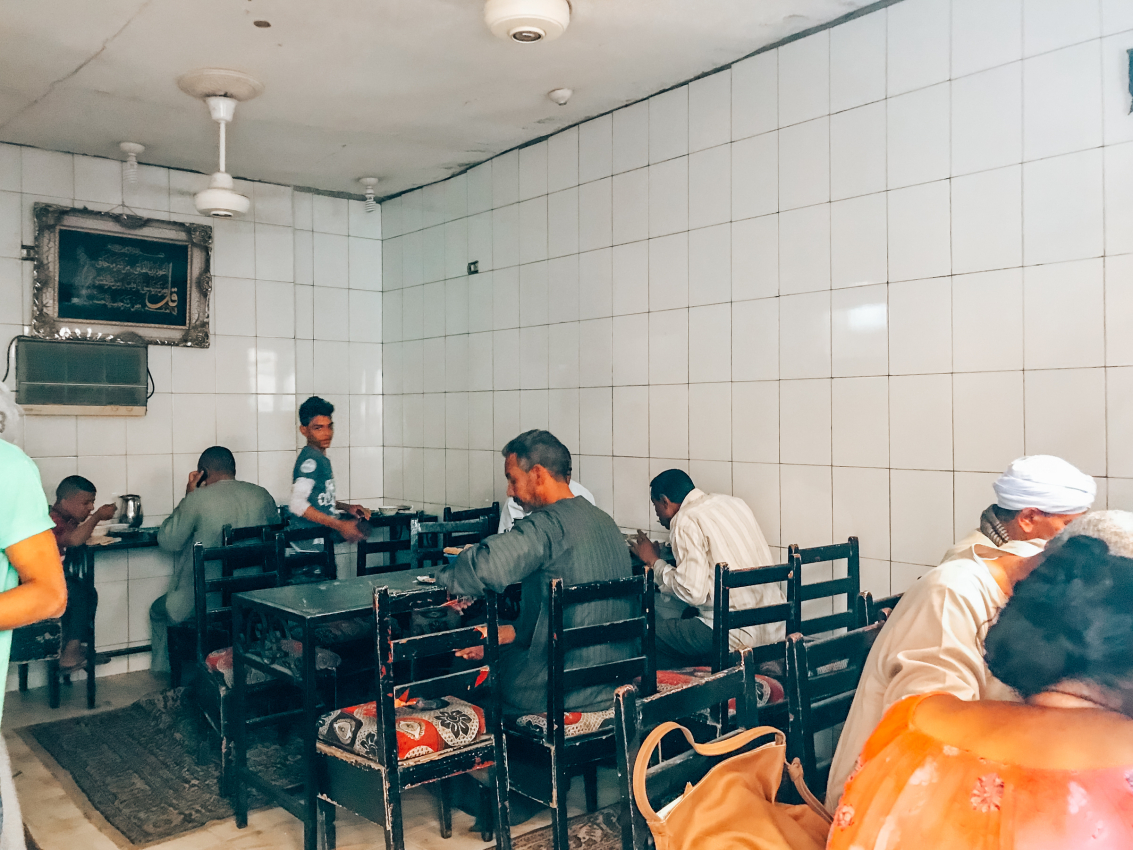
1. Aish Baladi Flatbread
The Egyptian cousin of the infamous pita bread, Aish Baladi is a flatbread made of whole wheat flour. Aish means ‘life’ while baladi means ‘traditional‘ or ‘rural’. The fact that the Egyptians called the bread ‘life’ instead of using the normal Arabic word ‘Khobz’ says a lot about the importance of bread in the culture.
Popular since ancient times, it has been a staple across all strata of income in Egyptian society. Eaten for breakfast, lunch, or dinner, this clay oven bread is one Egyptian dish you must try.
Aish baladi can be eaten with simple dips or hummus, or more complex meals. It’s also often used as a pocket or bread bowl for other additions.
2. Hummus
The perfect combination of chickpeas with olive oil, tahini, garlic, and lemon, hummus is the perfect accompaniment to the aish baladi bread.
Who invented hummus is a moot point, with Egypt, Lebanon, Israel, Cyprus, Turkey and other cultures all claiming to have first created it.
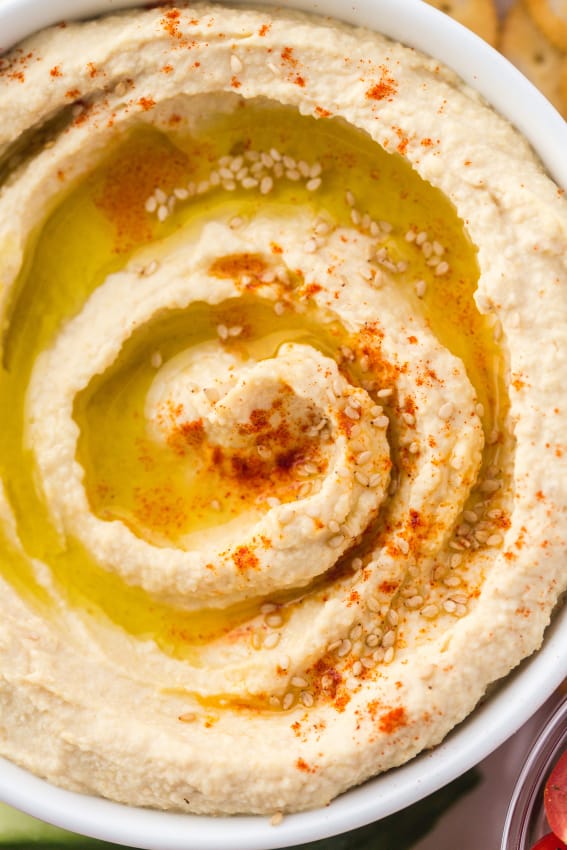
3. Ful Medames
Also called ful, this Egyptian bean stew dates as far back as the time of the pharaohs. Usually made with bath beans (fūl ḥammām), it can also be made with fava beans that are fresh (fūl akhḍar) or crushed (fūl madshūsh), or even with fūl baladī (country beans) or fūl rūmī (European broad beans).
The beans are soaked for a long time to remove the casing, then they are cooked for hours till soft with onions, salt, herbs, spices, and lemon juice.
Typically eaten as a dip and consumed at all hours of the day, it’s considered an Egyptian national dish. Eat it at the street vendors to get the best flavor.
4. Baba Ghanoush
Think of it as hummus made with eggplant instead of chickpeas. Baba Ghanouj or Baba Ghanoush is a dish made with roasted eggplant that’s mashed to a puree or chunky mixture depending on the style, and mixed with tahini, olive oil, garlic, and lemon juice.
The smoky flavor of the roasted eggplant is tantalizing and perfect as an accompaniment to pita bread or as a dip on a mezze platter.
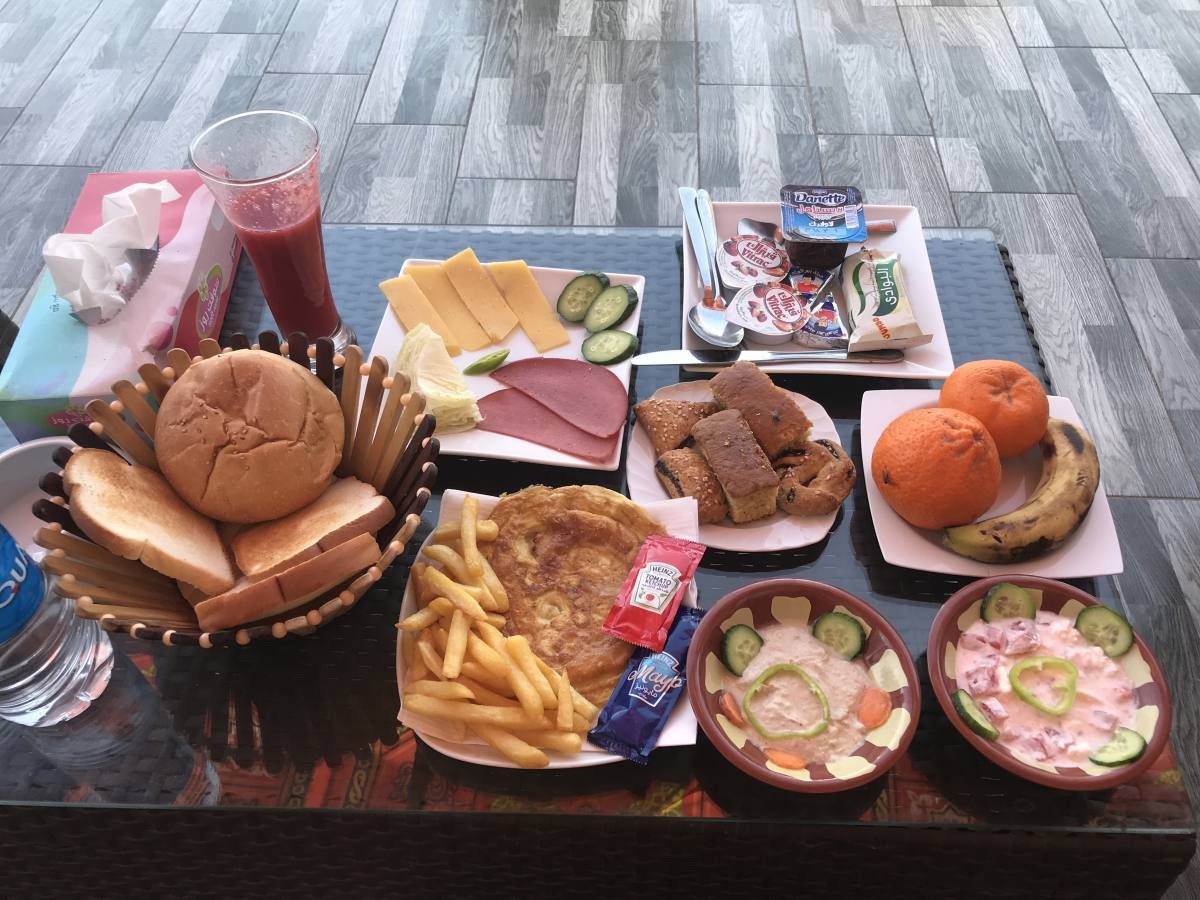
5. Shakshuka
Popular in Israel as their national dish, shakshuka is also a part of Levantine cuisine. It may have originated in the Ottoman Empire in the Northern African region circa the 16th century. It has been a popular part of Egyptian culture for decades.
The dish consists of making tomato sauce with bell peppers, onions, olive oil, garlic, and spices, and then poaching eggs in it. Some versions also include cheese. Make sure to try it when you visit Egypt.
6. Falafel
Originating in Egpyt, falafel is made of fava beans and is called taʿmiya or taameya. (Versions in other countries can also be made with chickpeas).
You’ll find taameya sold on many street corners and markets in Egypt, being deep fried and served really fresh and hot. Just order your falafel, watch the vendor fry them fresh, then dip them into some tasty tahini sauce and let your senses take over.
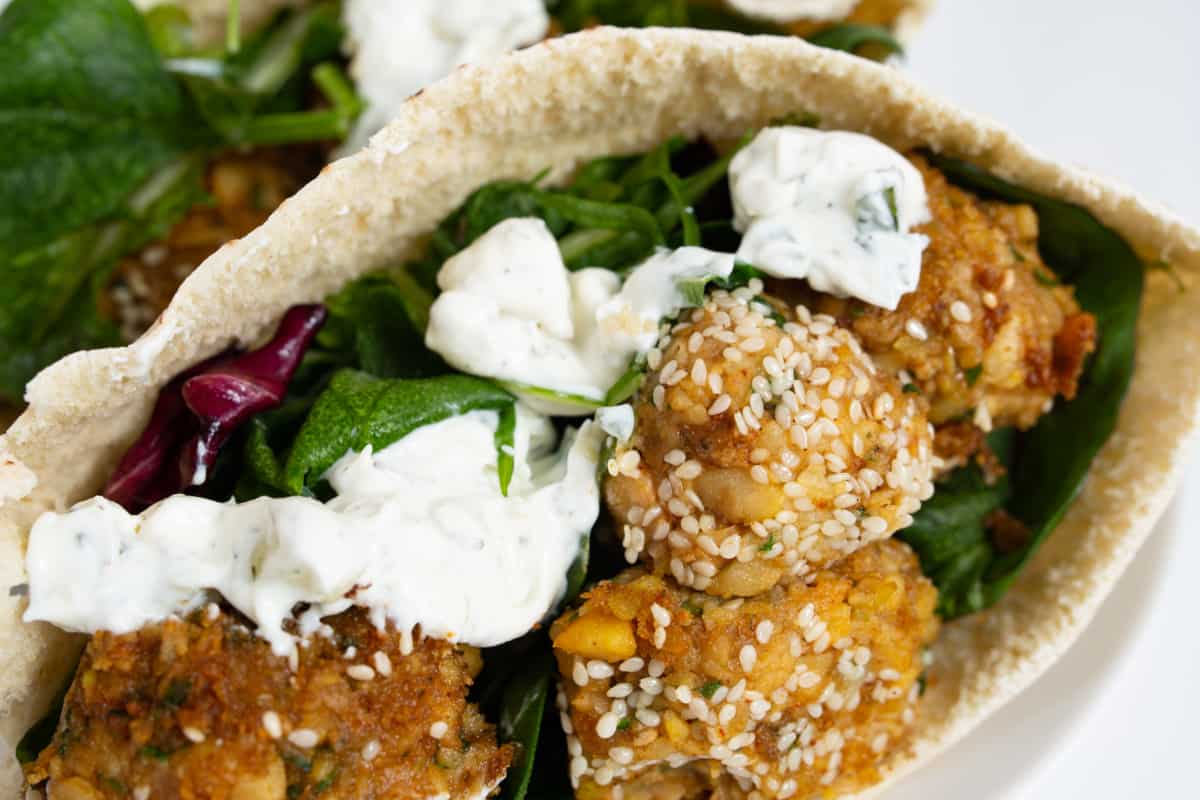
7. Kofta
Kofta is a type of kebab that’s made of minced meat as opposed to original kebabs which are simply made of grilled meat that hasn’t been minced. The word kofta is originally from the Urdu language, and means pounded meat.
Kofta in Egypt is usually cigar-shaped and grilled, although sometimes you’ll also find meatball-shaped kofta. Kofta can be added to the aish baladi along with your favorite dip and salad to make a whole meal. Or it can be eaten as is with fried and a dip.
8. Koshari
Another Egyptian staple that’s considered a national dish, the koshari either means ‘food of the rites of the Gods’ or ‘the food of the poor’.
Eaten in ancient Egypt after the fast in the Pachons, it’s a mix of rice, lentils, macaroni, and sometimes vermicelli that are mixed with a quintessentially Egyptian delicious lemon sauce.
Depending on the part of Egypt it hails from, it can be topped with fried onions, lightly pickled tomatoes, or rolled eggs. Street vendors nowadays also offer hot sauce and vinegar with the koshari.

9. Molokhia
Mulūkhiyyah or molokhia is a dish made from a shrub of jute called nalta jute, tossa juste, or denje’c’jute. When cooked, the bitter leaves turn into a slimy sort of broth resembling okra’s sliminess.
In Egypt, where molokhiya is considered to be one of the national dishes, it is made by chopping the leaves fine and boiling them in a broth with lamb meat, or sometimes rabbit or chicken.
A mix of finely chopped coriander and garlic is heated in oil and added to the soup while still sizzling. Eaten with rice or aish baladi, this dish is the perfect place to hide veggies for your kids.
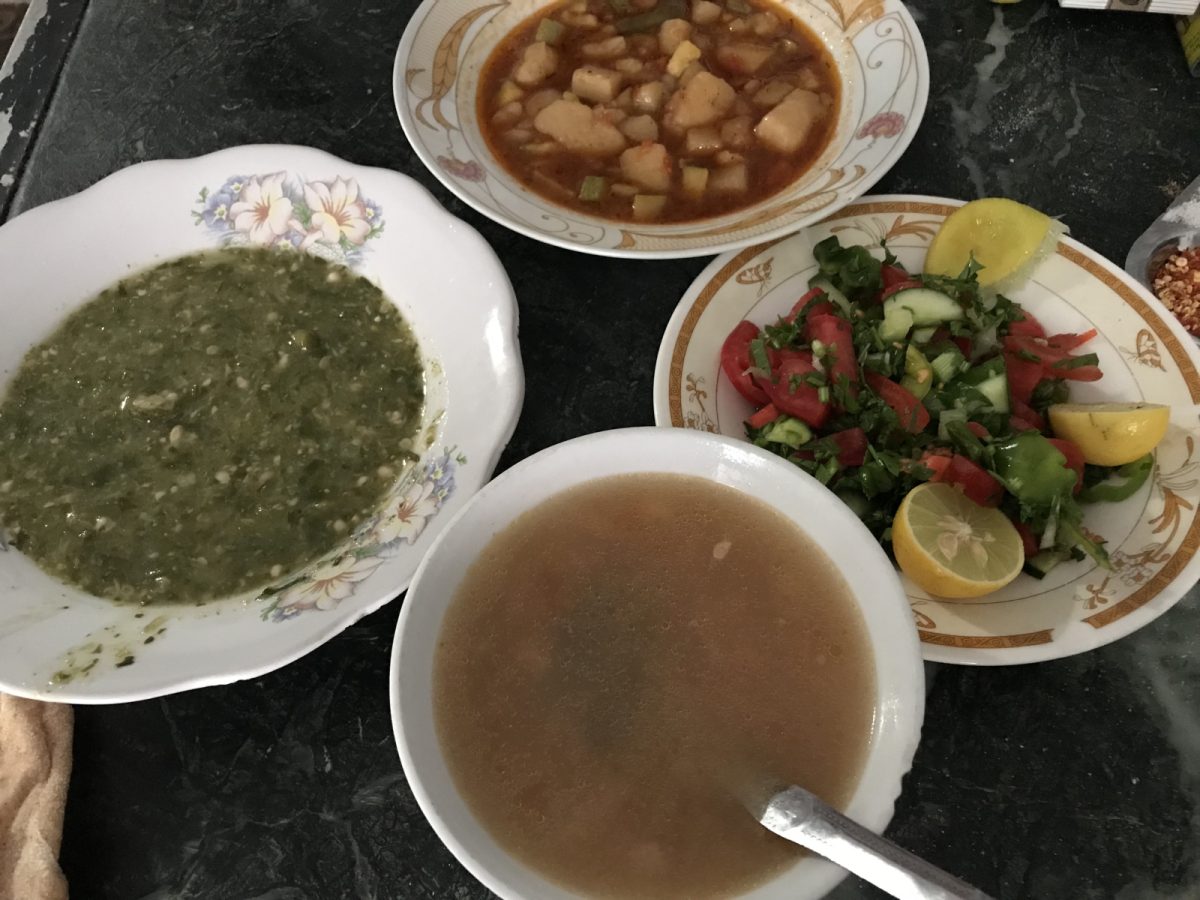
10. Fiteer Baladi (Egyptian Pizza)
Fiteer baladi, feteer baladi, feteer meshaltet or simply feteer, is a popular Egyptian dish that means ‘cushioned pies’.
This flaky Egyptian pastry-like bread is made of many layers of dough and clarified butter. Often referred to as an Egyptian pizza, you can buy your feteer plain, or stuffed with sweet or savory fillings.

11. Shawarma
A big part of Levantine cuisine, shawarma originated during the time of the Ottoman Empire, and may be a derivative of the Turkish doner kebab.
The word shawarma which means ‘turning’ refers to the rotating rotisserie on which the meat is cooked.
It’s a popular street food in Egypt, UAE, Kuwait, Iraq, Saudi Arabia and a few countries in South Asia, and almost all the world now.
The sumptuous meat served in a delicious Egyptian bread and topped with tahini sauce and veggies is a must-try Egyptian dish.
12. Bamya
Bamia or bamya or bamieh is a stew of okra, tomatoes and lamb meat that’s popular in Egypt and many of the surrounding nations. Naturally though, the word bamia means okra in Arabic.
Flavored with Egyptian ta’aleya, a garlic sauce, the Egyptian bamia is often made of lamb tendons and eaten with rice.
13. Baklava
A more than delicious Egyptian dessert, the baklava is made of layers of phyllo pastry that have crunchy nuts in between and are topped with a sweet syrup called a sharbat. The nuts can include pistachios, hazelnuts, walnuts, or others, while variations of the dessert include rose water, honey, orange blossom water, spices, and more.
Also having its origins in the Ottoman Empire, you’ll find baklava in many local markets and sweet shops. While enjoying your fill, make sure you also grab a box of these diamond-shaped treasures for those friends and family waiting back home.
14. Basbousa
Reminiscent of the Turkish revani, the Egyptian basbousa is a semolina cake that is diamond or rectangular shape. After baking, it is soaked in a syrup of sugar, rose water or orange blossom water, and then topped with halved pistas, almonds, or hazelnuts.
Every bakery in Egypt sells basbousa, just like they sell baklava, and almost every recipe is a bakery-family secret. You’ll find it difficult to eat just one of these, I came home with boxes.
15. Hamam Mahshi
Considered a North African delicacy, hamam mahsi is a must-try in Egypt. Mahsi means stuffed rice, and hamam is a pigeon. So basically, you’re eating a dish of pigeon stuffed with rice.
It’s not as scary as it sounds. In many Middle Eastern countries, pigeon is considered a delicacy and is often served at special occasions like weddings and other celebrations.
If you’re brave enough to try the dish, you might like it. Young 6-week-old pigeons are stuffed with a mixture of cracked wheat (freekeh), rice, nuts, spices, onions and quite often the pigeon’s giblets.
These pigeons are then roasted or grilled till crispy, and taste really delicious. You might have to forego the fork and spoon though. With the number of small bones in the bird, it’s best to eat like the locals, with your hands!
How many of these famous Egyptian dishes have you tried? And how many do you plan on tasting on your next visit to Egypt?

